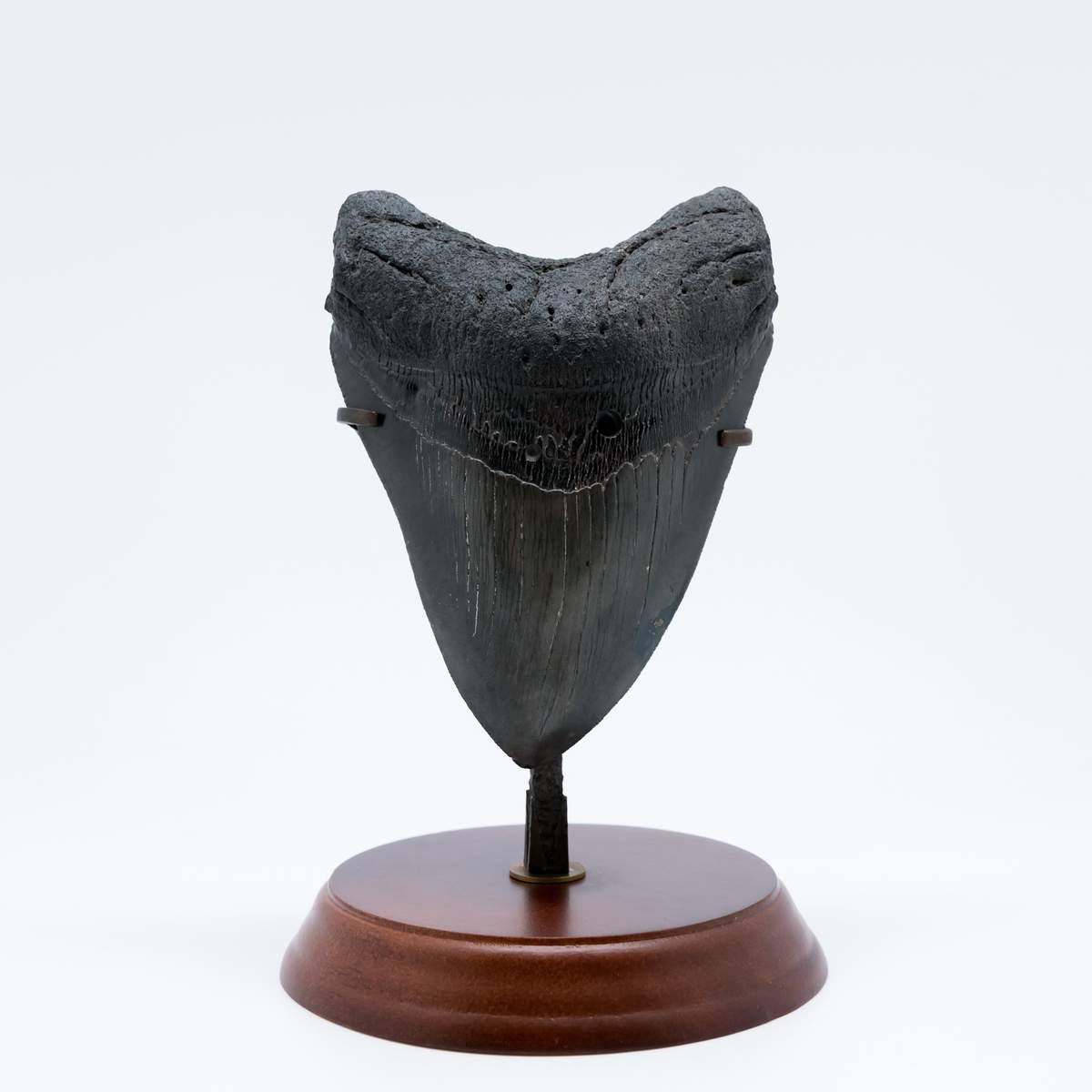
Megalodon Teeth 101
Whaler’s Locker has a vast collection of Megalodon teeth in varying sizes so that you can take home a fossil of an extinct giant and keep a piece of history close. Megalodon sharks are the stuff of legends and myths, and it’s no wonder, given how huge they were. Whether you’re a lover of all fossils, or you just love sharks and shark teeth, you may be interested in learning more about Megalodon and Megalodon teeth.
What Was a Megalodon?
Megalodon, or Otodus Megalodon, is an extinct species of shark. Based on the earliest fossils found, Megalodon lived approximately 20 million years ago and swam the ocean for about 13 million years. Because shark’s skeletons mostly consist of cartilage, scientists have only fossils of shark teeth and vertebrae from which to learn. That may come as a surprise, given all that we are able to tell from Megadolon Teeth and vertebrae fossils, including:
Megalodon Shark Facts
- Megalodon went extinct about 3.6 million years ago. Scientists at Zurich University have proposed that their extinction was likely due to a lack of prey and increased competition from other predators.
- Megalodon grew to be up to 60 feet long.
- Megalodon was a fierce predator and likely ate whales, giant turtles, and other ocean life.
- Megalodon teeth have been discovered around the world.
Are Megalodon Teeth Real?
You might be wondering what makes up these shark teeth found around the world. Are they the actual teeth that crushed and shredded prey? To discuss this, we need to first talk about the different kinds of fossils. There are four different kinds of fossils:
Types of Fossils
- Molds
- Casts
- Traces
- True Form
Molds are imprints made from an organism. They are hollow, and due to the way they form, they are a backward image of the organism. Common organisms preserved as mold fossils are shark teeth, skin, and claws.
Casts are formed similarly to the way molds are created, but after a mold imprint forms, minerals fill the negative space and harden into solid rock. Shark teeth are common cast fossils, as well as leaves and embryos.
Traces are fossils that are not made from the organism’s body directly, but they do give us information about the organism. Examples would include teeth markings, nests, or footprints. Traces are the most common type of fossil. While they may sound less interesting than other types of fossils, scientists can often learn more about the way organisms lived, ate, and rested from traces than other kinds of fossils.
True form fossils form through petrification, which is the process of minerals seeping into the bones of an organism and eventually replacing the bone with solid rock. Some common examples of true form fossils are heads, limbs, and fingers.
Whaler’s Locker Has an Impressive Collection of Megalodon Teeth
Shark teeth fossils, like Megalodon teeth, make great gifts or collectible items. Some have been polished, and others are left entirely untouched to fit whatever style you like.


